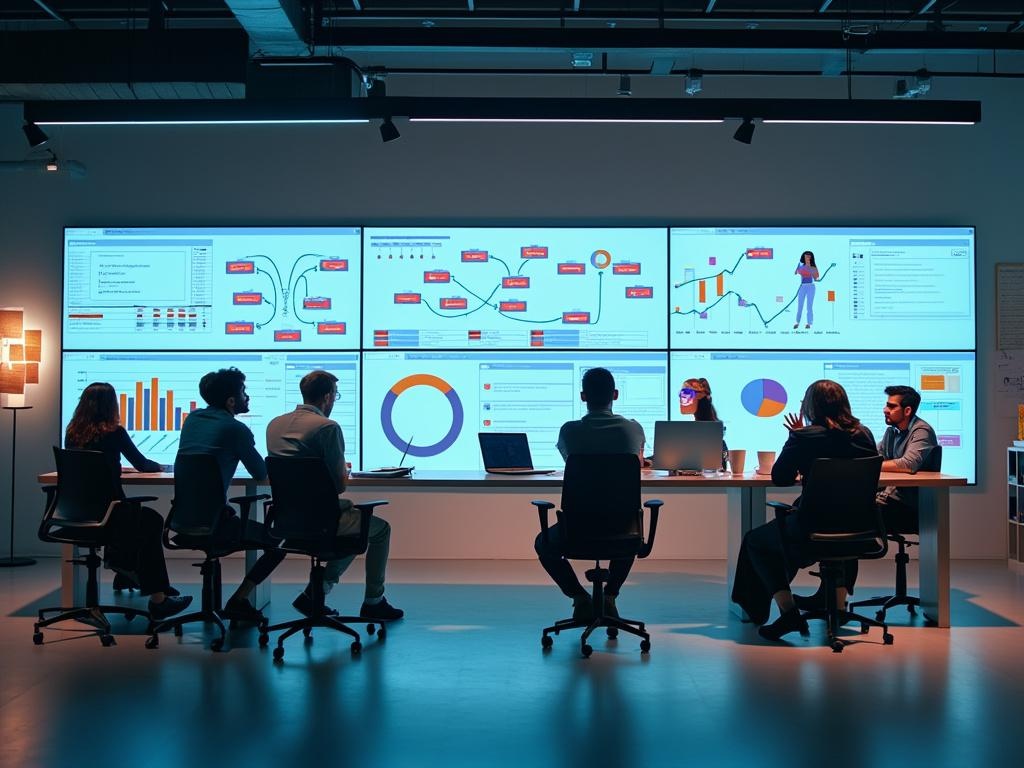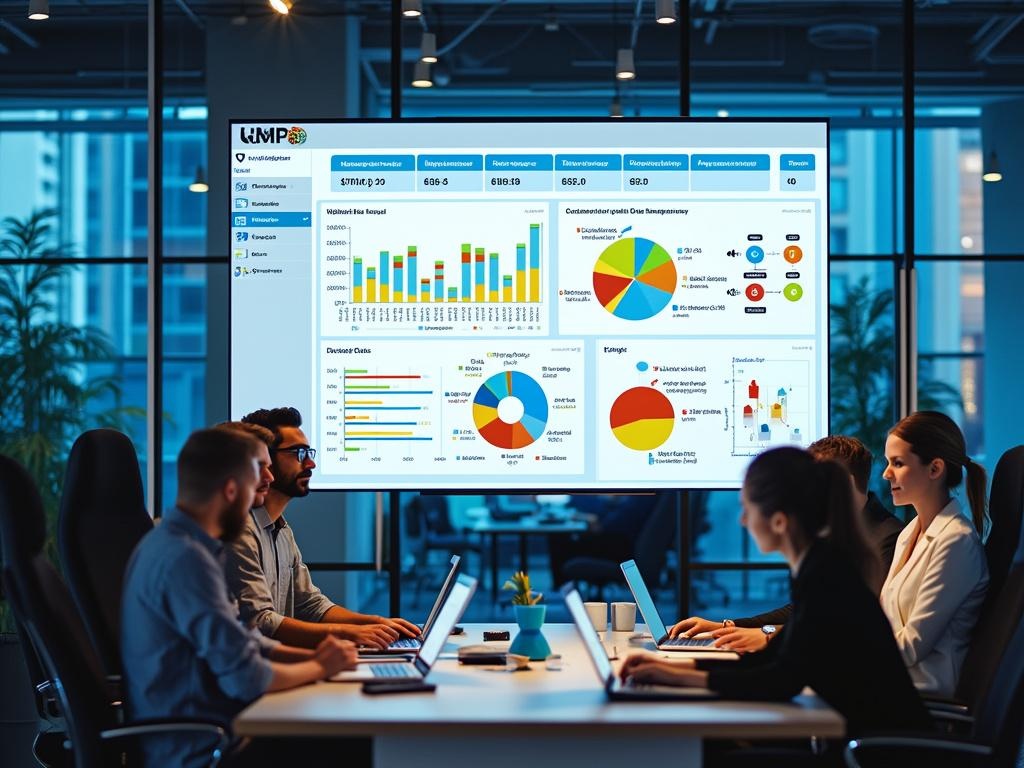
Project Management Tools: Essential Features for Effective Planning
A tool used for creating project management plans offers complete platforms that help you create, track, and execute your projects through visual workflows, task management, and team collaboration features. These digital solutions make project organization easier by centralizing all documentation, automating routine work, and giving you real-time updates on progress across your teams.
Business Value and Organizational Impact
Project management planning tools deliver major benefits by boosting efficiency and supporting data-backed decisions. They break down communication barriers by creating a central hub for all project information, which cuts down on meetings and emails while maintaining visibility for everyone involved. Project management planning software also helps you allocate resources effectively through capacity planning features that protect teams from overwork and prevent budget issues.
By standardizing how you plan and automating repetitive work, these tools increase productivity and improve project success rates. They also provide analytics that help you continually improve your processes. The right tool used for creating project management plans transforms how your organization handles projects from start to finish.
7 Essential Tools Used for Creating Project Management Plans: Enhance Your Planning Strategy Today
Choosing the right tools for creating project management plans is crucial for ensuring successful project delivery. The following section outlines seven key types of tools that can significantly improve your planning process, streamline collaboration, and enhance overall project visibility. From task management systems that offer workflow management to advanced resource allocation tools, each category plays a vital role in keeping your projects on track. Additionally, features like visual planning, automation, and mobile access allow teams to coordinate effectively, even in today’s increasingly remote work environment. By leveraging the latest technologies and functionalities available in these project management tools, you can optimize your approach and foster an agile and responsive project management culture.
“`html
1. Task Management and Workflow Tools
Selecting the right tool used for creating project management plans starts with robust task management capabilities. Kanban boards and task lists provide visual representations of work progress, helping you track project advancement at a glance. Modern project management software offers dependencies and milestone tracking that connects related tasks and highlights critical project checkpoints.
Effective tools allow you to assign priority levels to tasks and update statuses as work progresses. This functionality helps teams focus on the most important work while maintaining visibility into overall project health. Many platforms also include automated task assignments and due date reminders that notify team members about upcoming deadlines, reducing the need for manual follow-ups.
When evaluating task management features, look for tools that balance simplicity with depth of functionality. The best solutions adapt to different workflow styles while providing the structure needed for effective project collaboration.
“`
2. Visual Project Planning Features
When selecting a tool used for creating project management plans, visual planning features are essential for effective timeline management and resource allocation. Gantt charts provide a comprehensive visualization of project timelines, allowing you to see task dependencies, durations, and critical milestones at a glance.
Critical path analysis tools help identify the sequence of crucial tasks that determine your project’s minimum duration. These tools highlight which activities cannot be delayed without affecting the project completion date, enabling better decision-making when priorities compete.
Project calendar views offer intuitive scheduling interfaces where you can:
- View task deadlines in daily, weekly, or monthly formats
- Identify scheduling conflicts immediately
- Coordinate team availability across multiple projects
- Set recurring tasks and meetings
Resource capacity planning tools are vital for preventing overallocation. They help optimize your capacity planning by providing visual indicators of team member workloads across projects. This prevents burnout and ensures your project plans reflect realistic timelines based on available resources.
Expert Insight: Choose project management tools with strong visual planning features, such as Gantt charts and calendar views, to enhance timeline management and resource allocation. These tools enable clear visibility of task dependencies and scheduling conflicts, ensuring realistic project planning while preventing team burnout through effective capacity management.
3. Resource and Budget Management
When selecting a tool used for creating project management plans, effective resource and budget management features are essential for financial control and team allocation. Project management tools like Microsoft Project and Asana help you track resource availability and prevent overallocation issues.
Budget tracking capabilities enable you to monitor project expenses against planned costs in real-time. This ensures you can identify budget variances before they become problematic and take corrective actions to prevent cost overruns.
Time tracking integration allows team members to log hours directly within the project management system. This functionality connects actual work hours to specific tasks, providing accurate data for:
- Resource utilization analysis
- Client billing and payroll processing
- Future project estimation improvements
- Performance tracking against planned effort
Financial reporting tools generate customized reports showing budget versus actual spending, helping you make informed decisions about resource allocation. Advanced capacity planning features allow you to visualize team workloads and adjust assignments to optimize productivity.
Many tools also include forecasting capabilities that analyze current spending patterns to predict final project costs, giving you early warnings about potential budget issues.
Expert Insight: Effective resource and budget management is crucial in project management. Utilize tools that offer real-time budget tracking, time tracking integration, and financial reporting to prevent cost overruns and optimize team productivity. Leverage forecasting features to anticipate budget issues early and make informed resource allocation decisions.
4. Team Collaboration Functions for Effective Project Management Planning
When selecting a tool used for creating project management plans, robust collaboration features are essential for team success. Modern project management software enables seamless coordination across departments and locations.
Real-time document sharing and editing capabilities allow multiple team members to work simultaneously on project plans, eliminating version control issues. You can track changes, revert to previous versions, and ensure everyone has access to the most current documentation.
Built-in communication tools and chat functions create dedicated channels for project discussions, reducing email clutter and keeping conversations organized by topic or task. These tools maintain a searchable history of all communications related to your project planning process.
@mentions and commenting features enable direct feedback on specific plan elements, drawing attention to areas needing input from particular team members. You can tag colleagues on tasks, documents, or in discussions to ensure critical planning items don’t go unnoticed.
Virtual meeting integration connects your project collaboration platform with video conferencing tools, allowing you to schedule, join, and record planning sessions without switching applications. Meeting notes and action items can be captured and assigned directly within your planning tool.
Expert Insight: Choose project management software with strong collaboration features to enhance team coordination. Leverage real-time document editing, organized communication channels, and direct feedback tools to streamline planning processes. By integrating virtual meetings and capturing action items within the platform, ensure efficient follow-through and maintain project momentum.
5. Process Automation and AI Capabilities
Modern tools used for creating project management plans now incorporate powerful automation and artificial intelligence features that transform how you manage projects. Automation streamlines repetitive tasks, allowing your team to focus on high-value work instead of administrative duties.
When selecting a project management tool, look for these automation capabilities:
- Automated workflow triggers that initiate actions when specific conditions are met
- AI-powered project insights that analyze historical data to predict potential delays
- Smart task scheduling suggestions that optimize your team’s productivity
- Automated progress reports that generate updates without manual input
These features significantly reduce the manual effort required in project planning and execution. For instance, project integration management becomes more streamlined when your tool can automatically detect dependencies and adjust schedules accordingly.
The most advanced project management tools can even analyze past project performance to suggest improvements for current plans, helping you avoid scope creep and other common pitfalls that derail projects.
Expert Insight: Leverage project management tools with automation and AI features to enhance efficiency. Look for automated workflow triggers, AI-driven insights for delay predictions, and smart scheduling suggestions. These capabilities minimize manual tasks, allowing your team to focus on strategic work and significantly improve project outcomes.
6. Integration and Customization Options to Enhance Your Project Management Tool
When selecting a tool used for creating project management plans, integration and customization capabilities are crucial for adapting the software to your specific workflows. Modern project management solutions offer seamless connections with other business systems to create a unified work environment.
Third-party app integrations allow you to connect your project management tool with essential business applications. By integrating with CRM systems, you can align project deliverables with customer requirements. Email and calendar integrations ensure all communications and scheduled events remain synchronized with project timelines, preventing scheduling conflicts and improving project integration management across teams.
Custom fields and project templates provide flexibility to tailor the tool to your organization’s unique needs. You can create:
- Industry-specific project templates
- Custom fields for tracking specialized metrics
- Personalized dashboards for different stakeholders
- Department-specific workflow views
Workflow automation builders let you design rule-based processes that execute repetitive tasks automatically. For advanced customization, API access enables custom solutions that extend the platform’s capabilities to address specific business requirements or integrate with legacy systems.

7. Mobile and Remote Access Features for Project Management Planning
When selecting a tool used for creating project management plans, mobile and remote accessibility has become essential in today’s distributed work environment. Modern project management solutions offer native mobile applications for both iOS and Android platforms, allowing you to manage projects from anywhere.
These mobile features enable you to create, update, and track project tasks even when you’re away from your desk. The offline access capabilities are particularly valuable when working in areas with limited connectivity – you can continue planning your project and have your changes automatically sync once you’re back online.
Real-time synchronization across all devices ensures that your project management plans remain current regardless of which device you’re using. Updates made on your desktop will immediately appear on your tablet or smartphone, maintaining consistency throughout your project collaboration process.
Mobile task management and approval features let you keep projects moving forward even when team members are working remotely. You can review, assign, and approve tasks directly from your phone, preventing bottlenecks in your project plan implementation. This mobile functionality is vital for global virtual projects where teams operate across different time zones.
Tools used for creating project management plans are comprehensive software solutions that integrate task management, visual planning, resource allocation, collaboration, automation, customization, and mobile access features into unified platforms. These essential capabilities work together to provide project managers with powerful systems for planning, executing, and monitoring complex initiatives across teams and departments.
Tools used for creating project management plans are indispensable for enterprise users facing the challenges of coordinating multiple stakeholders, managing limited resources, and delivering projects on tight deadlines. These platforms provide businesses with structured frameworks to improve project visibility, enhance team accountability, optimize resource allocation, and significantly reduce the risk of project delays and cost overruns that directly impact organizational profitability.
Conclusion
Effective project management tools are essential for successful project planning and execution, offering a comprehensive suite of features that streamline workflows and enhance team collaboration. From robust task management and visual planning capabilities to resource allocation, automation, and mobile accessibility, these platforms provide the foundation for transparent project governance, efficient resource utilization, and consistent delivery of business objectives.
Actionable Steps
- Assess your specific project management needs and select a tool that offers the right balance of visual planning features, collaboration functions, and automation capabilities.
- Implement integration options that connect your project management platform with existing business systems to create a unified work environment.
- Utilize resource and budget management features to track expenses in real-time and prevent cost overruns.
- Leverage mobile access capabilities to maintain project momentum with distributed teams working across different locations.
- Take advantage of customization options to tailor the project management tool to your organization’s unique workflows and requirements.






